The first striking aspect of Oz the Great and the Powerful (2013) is that its opening images are in both black and white and the 4:3 aspect ratio that was common to Classical Hollywood cinema but rarely seen nowadays. Although anyone who has seen the trailers for this film will know to expect the black and white 4:3, there is still the uncanny feeling that the image is curtailed. This is made all the more obvious after the opening credits when we see the circus where central character Oscar/Oz is based. A fire-eater blows a large arc of flames across the border of the frame, which also comes slightly out towards the audience in stereoscopic depth. In a similar action, a dove flutters beyond the confines of the image. The overt and ostentatious display of how the film can play with its own borders recalls early cinema that operated as an attraction concerned with demonstrating its magical trickery. This delight in optical illusions is made clear within the film through the depiction of cinematic toys such as the zoetrope and a (albeit improbable) modified praxinoscope. The link to early cinema is similar to the one made in Martin Scorsese’s Hugo (2011) when the spectacular imaging of stereoscopic film was used to revitalise knowledge of film pioneer Georges Méliès’ magic effects in early French cinema. As a truly US production, Oz the Great and the Powerful, makes reference not to Méliès but to the American cinema and technology inventor Thomas Edison. Oscar speaks of his clear admiration for the inventor and the final battle in the film depends upon mechanical trickery inspired by the inventor.
Whereas Hugo encouraged an enthusiastic return to and celebration of Méliès’ work, Oz the Great and the Powerful, has a slightly more troubled relationship with its cinematic past. Critics have noted that it does not have the same enchantment as The Wizard of Oz (1939) that it proposes to be a sequel to. In terms of acting as a reboot to The Wizard of Oz franchise, it is also disheartening that it sends its female characters back to the 1930s by depicting them as simplistic creatures driven by (white) purity and goodness or (black) hysteria and wickedness. While the film does a good job of celebrating some of the aesthetic qualities of Classical Hollywood Cinema (the shot of Michelle Williams turning to the camera after standing by the door, waiting for Oscar, recreates the stunning, enigmatic quality of Hollywood stars) its suggestion that female characters are made and broken by male heroes is more than slightly regressive. Perhaps one of the greatest missed opportunities is the film’s ability to elaborate its relationship with developing cinematic technology.
The Wizard of Oz famously shifted from its sepia tinted black and white opening to full Technicolour display in order to make use of contemporary developments in cinema technology. The obvious choice for Oz the Great and the Powerful would be to shift from 2D images to stereoscopic display in order to showcase the latest in digital 3D cinema expertise. Instead, stereoscopic effects appear from the beginning of the film and Oz the Great and the Powerful expands the 4:3 aspect ratio to widescreen and changes into colour in a way that more closely echoes the 1939 film. All of which is a shame because the stereoscopic effects are often stunning and there are moments that self-reflectively nod to developments and trends in stereoscopic cinema history. These could have been displayed more powerfully if the film had waited until Oscar’s journey to the Land of Oz to reveal them.
At various moments, Oz the Great and the Powerful recreates stereoscopic moments that are well known in public imagination. When the strongman chases Oscar out of the circus, the former’s arm reaches out into the auditorium as if grasping at the viewer. It is similar to the hand that famously stretched towards the audience in Hitchcock’s Dial M for Murder (1954). Shortly after, Oscar escapes in a hot air balloon but becomes entangled in the tornado that races through Kansas. Splintered wooden object caught up in the storm form into spears and dart towards Oscar. Because they dart at him, rather than the audience, it looks as if the film is avoiding the spear-at-the-viewer effect which is considered the epitome of the stereoscopic ‘gimmick,’ seen in Comin at Ya! (1981) and frequently derided by critics and filmmakers. However, towards the end of the film, a number of guards throw spears at the apparition of Oscar and in this case they fly directly towards the viewer in strong negative parallax. Oz the Great and the Powerful unashamedly revels in this spectacular moment. When Oscar finally lands in the Technicolour Land of Oz, he is thrown almost immediately down a turbulent river. Shots that appear to be taken from the point of view of Oscar in his wooden basket create a type of rollercoaster ride through dynamic landscapes that was often seen in the spectacular 3D IMAX films of the 1980s and 90s and has been utilised in numerous recent films such as Prometheus (2012), Sanctum (2011), and Wrath of the Titans (2012).
There are also a number of other moments that are rendered particularly effective with stereoscopic depth. When Oscar enters a teacup house to comfort China Girl, the space becomes extremely tight and intimate, helped in part by the way 3D effects make the spatial configurations more obvious. Later, when Oscar and the good witch Glinda travel inside large, floating, bubbles, the permeable surfaces of the bubbles protrude out into the auditorium. They create a tactile screen that is transparent enough to allow the action inside them to be seen but are substantial enough to exist in the auditorium space. As with other 3D films, the battle scenes allow stereoscopic debris, embers and other exploding material to cascade around the screen space.
Nonetheless, as beautiful as the film may appear, its lengthy (130 minute) journey into Oz fails to capture the same excitement and enchantment as earlier experiments with visual technology such as the Edison shorts and The Wizard of Oz’s use of Technicolour. Most of this is due to a weak narrative and poor characterisation which detracts from the visual splendour of the film’s fantastical world.

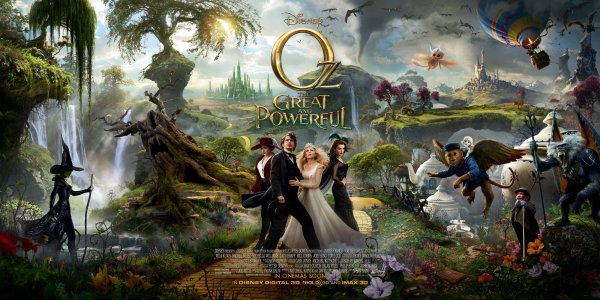
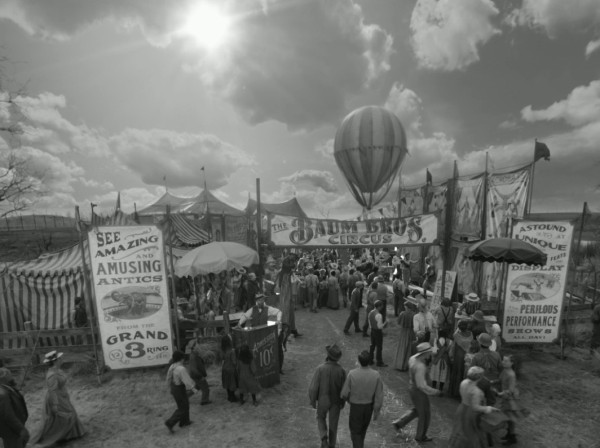
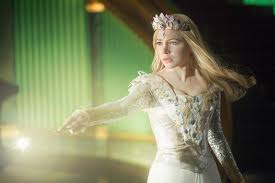
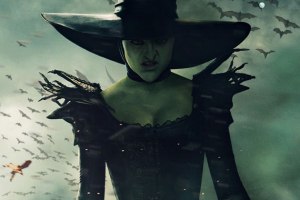
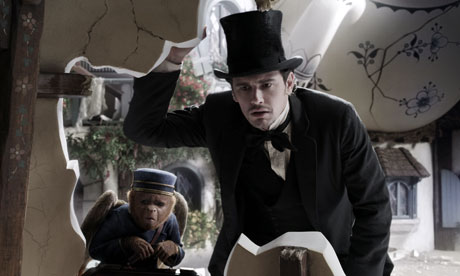
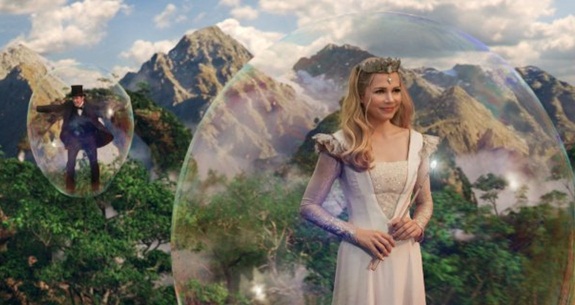
ewmarsh
/ May 30, 2013Hi,
Wrote a reply and then couldn’t recall my password. I appreciate the detail with which you are analyzing 3D films. Looking forward to what you have to say about Gatsby. I will also say that you are one of the very few to have picked up on what we were trying to do with the china doll and her town. I converged Oz aggressively negative and used a very narrow interocular/axial with the specific intent of making him a giant in that reduced scale world. Everything was working in our favor and I think the results were very rewarding.
Cheers,
Ed W. Marsh, stereoscopic supervisor, Oz the Great and Powerful
miriamruthross
/ June 1, 2013thanks Ed. Great Gatsby is out here on Thursday so hoping to get a review done asap